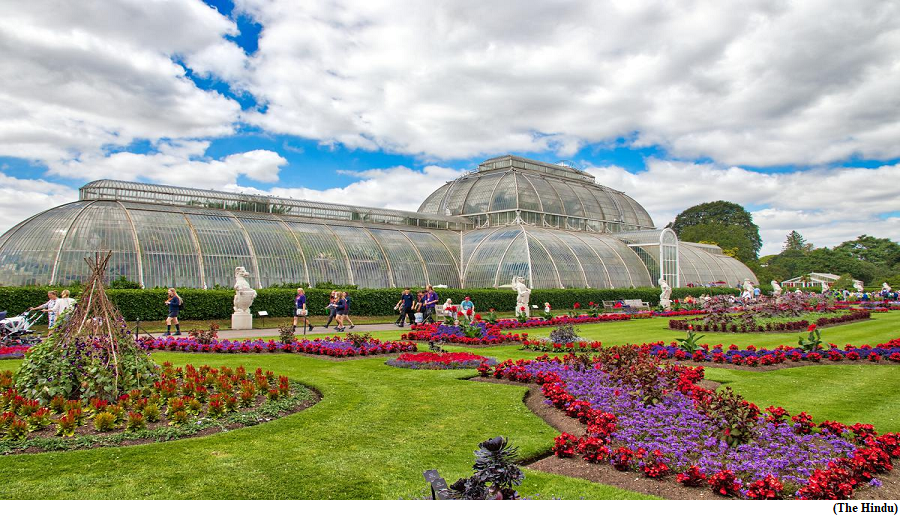Botanical gardens and life on earth (GS Paper 3, Environment)

Context:
- On this Earth Day (April 22), India should celebrate the recent decision of the Tamil Nadu government to establish a large botanical garden (the Chengalpattu Botanical Garden) in the State as an important and welcome piece of news.
- Every year, April 22 is celebrated as Earth Day, an annual event where people take time out to demonstrate their support for protecting the planet and its environment.
- For 2023, the theme for Earth Day is “Invest in our planet”.
- The first Earth day was celebrated more than 50 years ago on April 22, 1970.
Ancient tradition to Modern times:
- Humanity has had a long association with gardens ever since man learned to cultivate plants more than 11,000 years ago, marking the dawn of agriculture.
- The tradition of home gardens has been noted in ancient texts and depicted in cave paintings, showing the antiquity of gardening.
- Rulers, from ancient civilisations to modern ones, owned botanical gardens rich in native plants and plants collected from distant places.
- Between the 15th to 17th centuries, European explorations led to the establishment of several academic botanical gardens, where both plant curiosities and research on plants were used to justify their establishment.
- The oldest of these, Orto Botanico di Padova in Italy, was founded in 1545, and the most well-known, the Royal Botanic Gardens in Kew near London, was formally consolidated in 1840.
- Today, these botanical gardens are major centres of research and education on plants as well as famous tourist destinations.
The gardens in India:
- The oldest of the Indian academic gardens, the Acharya Jagadish Chandra (AJC) Bose Indian Botanic Garden, in Howrah, Kolkata, was established in 1787, albeit under a different name. The Garden is spread over 109 hectares.
- The city is also the headquarters of the Botanical Survey of India, and thus the country’s major research centre in botanical surveys and documentation.
- Globally, botanical gardens are important centres for plant exploration, discovery and research, as well as biodiversity outreach.
- Indian botanical gardens have often lacked this wider perspective.
Lack of knowledge:
- India is among the countries with a high diversity of plants and animals, with an estimated 18,000 to 20,000 plant species. Yet, knowledge of our vast botanical heritage is extremely limited.
- Our scientific and educational institutions, with a few exceptions, have neglected many aspects of plant biology: taxonomy, ecology, evolution, plant-animal and plant mycorrhizal interactions, population ecology and stress biology to name a few.
- The neglect is hard to understand given the importance of plants in our daily lives, and our continued pursuit for novel cures and the restoration of nature.
Collaboration in CBG:
- The ₹300 crore Chengalpattu Botanical Garden (CBG), at Kadambur village in Chengalpattu district, is being planned across 138 hectares, and will be India’s largest botanical garden.
- The CBG has the potential to become a major centre for the exploration and discovery of our plant wealth, a centre of research, education, citizen science, and outreach in plant biology, and be a forceful voice in conservation.
- The Royal Botanic Gardens in Kew has been chosen as a key partner for technical expertise on what plants to use and how to maintain them.
- In the past two decades, the botanical gardens in Singapore, Thailand, and Indonesia have set new standards in their research and outreach programmes while maintaining their recreational and ecotourism features. Collaboration with such gardens that share many plant species could be immensely beneficial.
Way Forward:
- Given the complex engineering that goes behind the construction and maintenance of a successful garden, botanical gardens today represent a metric of national success, from the perspectives of science, technology, and outreach
- In this era of climate change and declining biodiversity, there is need for every inch of our backyards and elsewhere to nurture native plants and associated living organisms, to remind ourselves and the generations to come of the need to heal our earth through the power of plants.


